- Call us: 01444 237070
- Contact Us
- Stores
- Sign In / Register
- Black Friday Deals
-
- Back
- Used Cameras
- Used Accessories
- Used Lenses
- Used Video
- Used Film Equipment
- Used Stock Alert
- Used Blank Test
- Sell or Part Exchange
- All Used Black Friday Deals
- Used Clearance
- Recently Added Used Equipment
- Park Picks
- Faulty
- Trade-In
- Blog
- New in
- Call us
- Contact us
- Stores
- Sign in
- Categories
- Tips & Inspiration
- Reviews
- News
- Events
- Features
- Buying Guides
- Competitions
November Astrophotography Highlights UK and NI
Time and time again I learn patience with this pursuit. It is the combination of science and art which excites me. The technical ability and determination to capture the object, and then the artistic flair to process the data into something I am proud of. The balance between repeatable and experimental leads me to strive to get better, to understand that I won’t nail it every time, but eventually, overall, I will show improvement (in my opinion!).
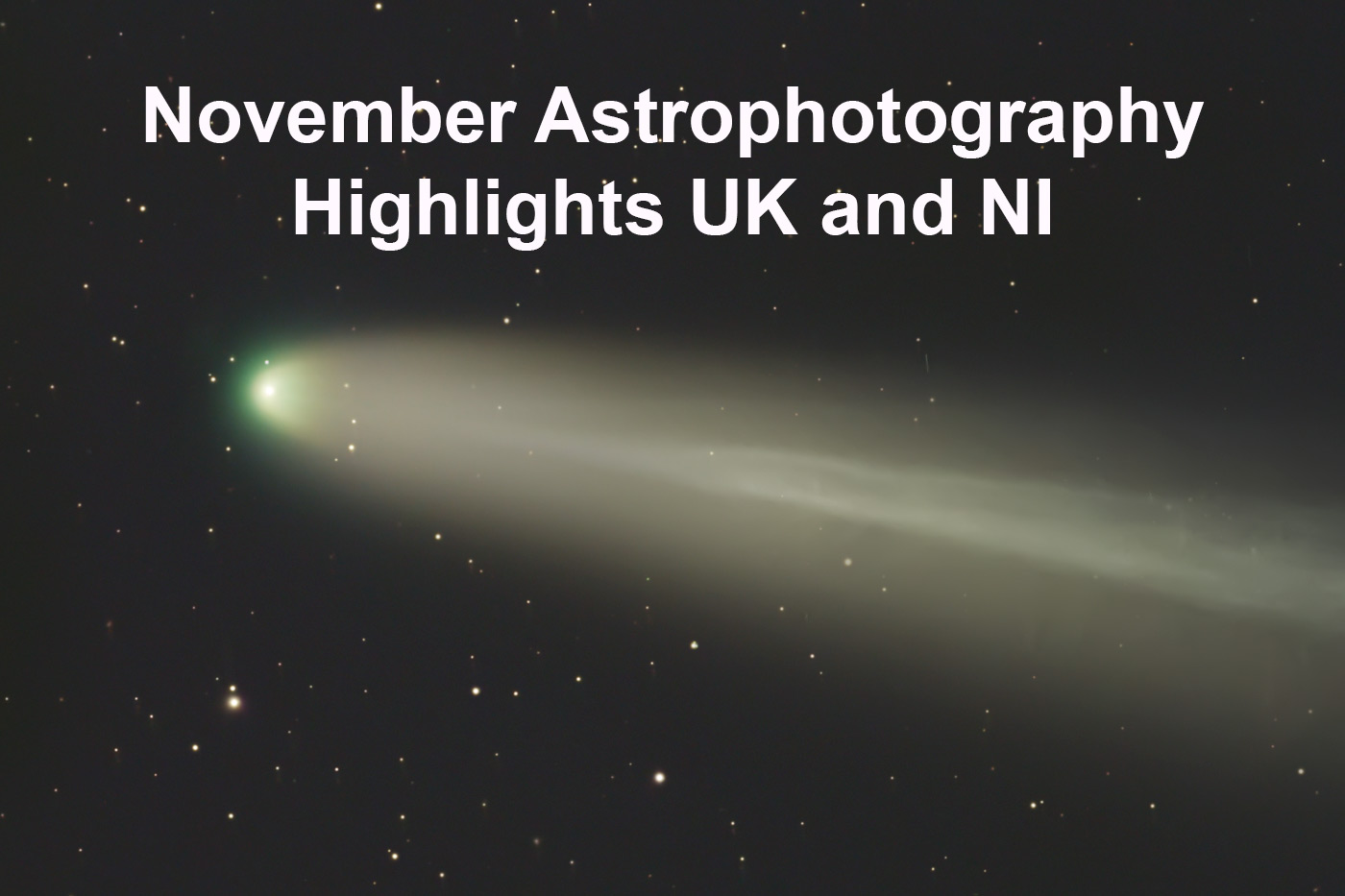
This past month has been very much one of self-reflection. How can I improve? How can I bring out the story in the image, rather than merely stating facts? How can I evoke interest, passion and inspiration in the observer? How might they feel part of the experience too? I don’t know if I am succeeding, but that is what I like to think!
With the clocks going back to GMT in late October, we as astrophotographers get an extra hour of darkness gifted to us in the early evening, which we sacrifice for one less early morning. Personally I prefer this, being able to get out straight after work and have a good 2 to 4 hours of imaging time and still be home on the same day, which makes it viable for a work night. Of course, if you are like me and do enjoy staying out all night, we are gifted with some truly magnificently dark skies, so make the most of it.
Early November (1st and 2nd) sees the Moon and Saturn close to each other. I expect our friend Bob Marshall won’t miss this epic opportunity to image them together.
On 5th November, along with many a firework I’m sure, we have the brightest full moon of 2025, yes, a supermoon! If you want some tips on how to image it, here is a blog I wrote a few weeks ago.
The Leonid meteor shower peaks on 17th November, known for fast, bright meteors with long trails. The Moon will not be too bright this year, making conditions excellent.
Comets, comets, comets…
At the moment there are at least three comets in the night sky.
C/2025 A6 (Lemmon), which visits us once every 1,100 years or so.
C/2025 P1 (Swan), much fainter and harder to see from the UK, best in the pre-dawn eastern sky with binoculars or a telescope. Its orbital period is estimated at 20,000 years.
And of course, how can I not mention 3I/ATLAS, currently passing behind the Sun, so we won’t be able to easily see it until late in the month, if not December. It is only the third interstellar object we have observed, which means it comes from outside our solar system, from another star system (possibly Vega), and it will leave our corner of the cosmos never to return.
Whilst comets are of limited fascination to me, with the distinct lack of clear nights due to cloud and bright moons, the opportunity to do any meaningful deep sky imaging has been scarce. As such, I made an effort to try and improve my comet skills and capture C/2025 A6 (Lemmon). Currently in its approach towards the Sun, it can be seen early evening. I believed I could see it with my naked eye, but then again, because I know where it is (as I am sure many others find with this obsession of looking at things in the dark), you can visualise it because you know where it is, and it is hard to discern what your imagination sees and what is reality. That is, until you point a telescope at it and can see it for real.
Anyway, here is a photo I took last year of 12P/Pons-Brooks. It was, to me at the time, a marvel that I had captured it at all. I don’t remember the exact Exif, but it would have been taken with a Canon 7D, probably a 50mm f/1.8 lens and a Sky-Watcher Star Adventurer. Andy Lee (who you may remember I paid tribute to in the June edition of this blog) taught me how to image comets, so in his memory, it would be nice to see if I have improved at all.
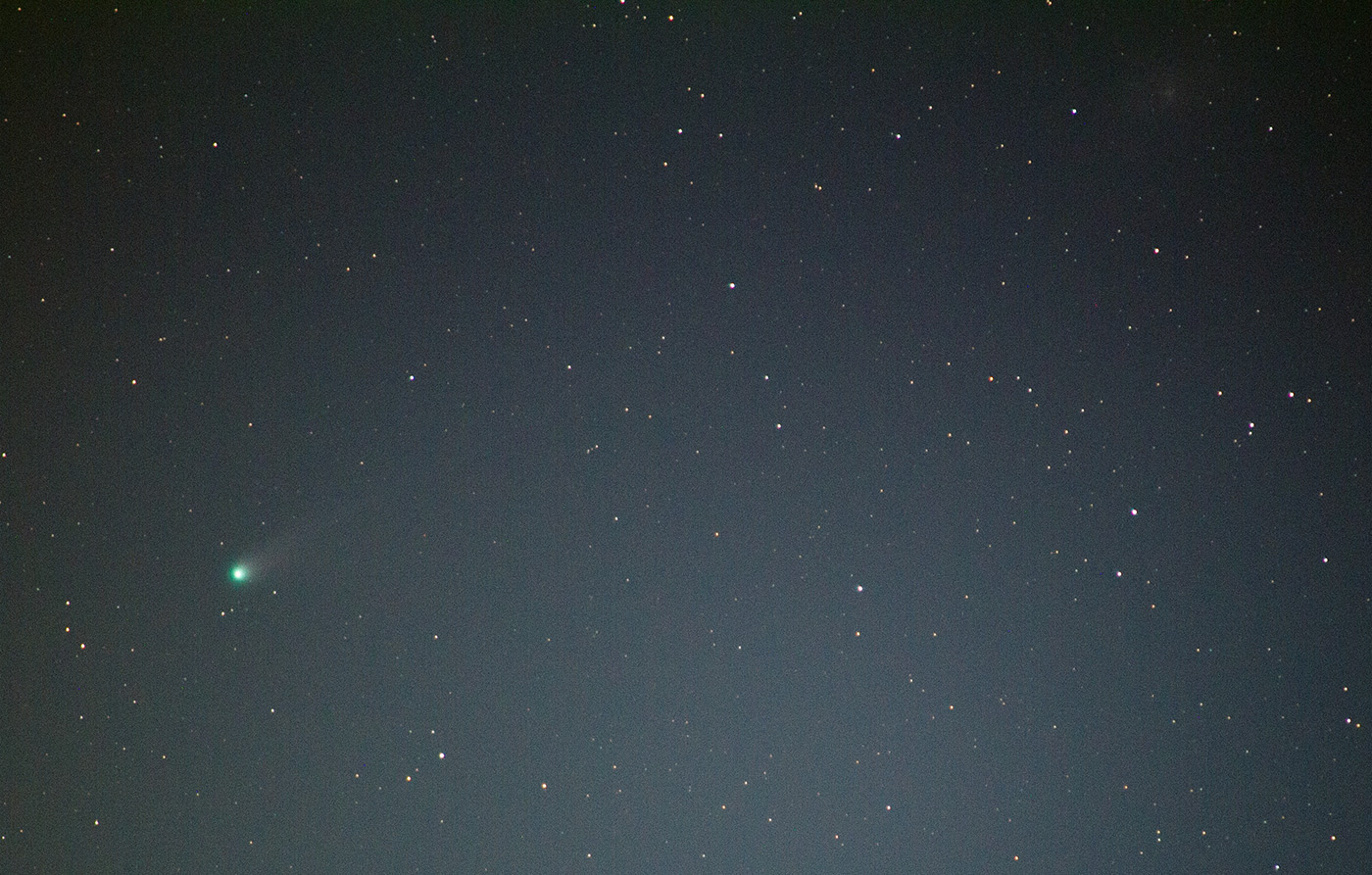
Here is my image of C/2025 A6 (Lemmon) taken on Friday 24th October around 1930 on the South Downs, West Sussex.
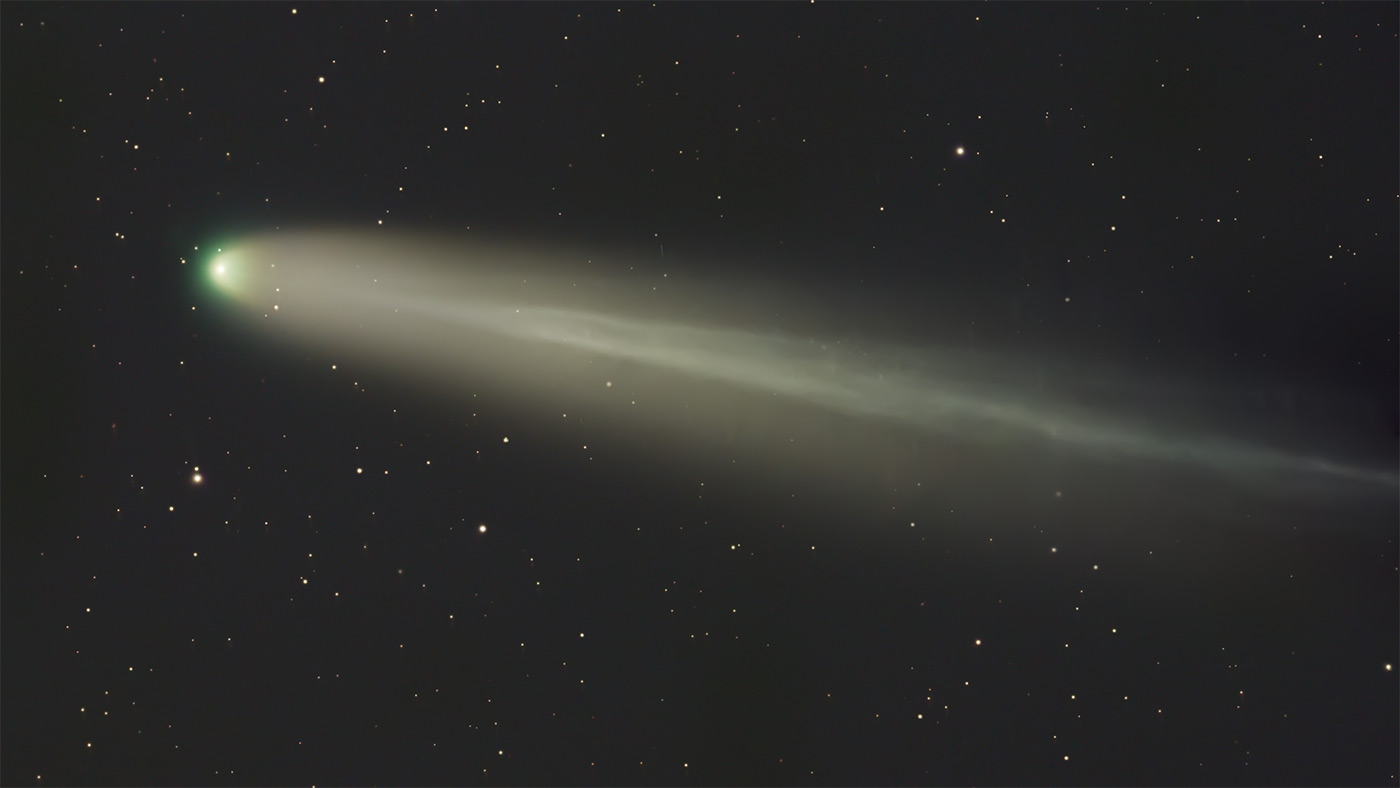
EXIF
Camera: ZWO ASI585MC Pro.
Telescope: Altair Astro 70ED Telescope (420mm).
Mount: Sky-Watcher EQ5 Pro StellarTuned.
Computer: ZWO ASIAIR pro
Method:
Lights: 65 x 5s Gain 252 (Unity).
27 x 20s Gain 252 (Unity).
Stacked in Pixinsight, processed in PixInsight and tweaked in Photoshop.
Kit Update
Whilst I haven’t bought any additional hardware this month, there are two things I have upgraded which have revolutionised my processing. The first is PixInsight, to me, the absolute pinnacle in astro processing software. It isn’t cheap at 300 Euros, but the results, and the speed of those results, are second to none. Yes, theoretically I could achieve the same results using my old workflow of DSS, Siril and Photoshop, but the repeatability, speed and outcome are much more hit and miss, for me at least.
PixInsight isn’t very intuitive, but there are plenty of tutorials on how to use it (YouTube etc.), and the results are out of this world (excuse the pun!). Then, to really get the best out of it and exploit every pixel of data to the max, it is best to buy the suite of add-ons that Russell Croman has created: https://www.rc-astro.com/. These are also available for Photoshop.
The combination of these tools has really taken my astrophotography to the next level. This is my current order of tips to succeed in astro (assuming you have a camera and a lens at the very least):
1. Good mount at least an SA GTI
2. ASIAir
3. Pixinsight and RC-Astro Suite
Deep Sky Objects
Cygnus wall - North America Nebula NGC 7000
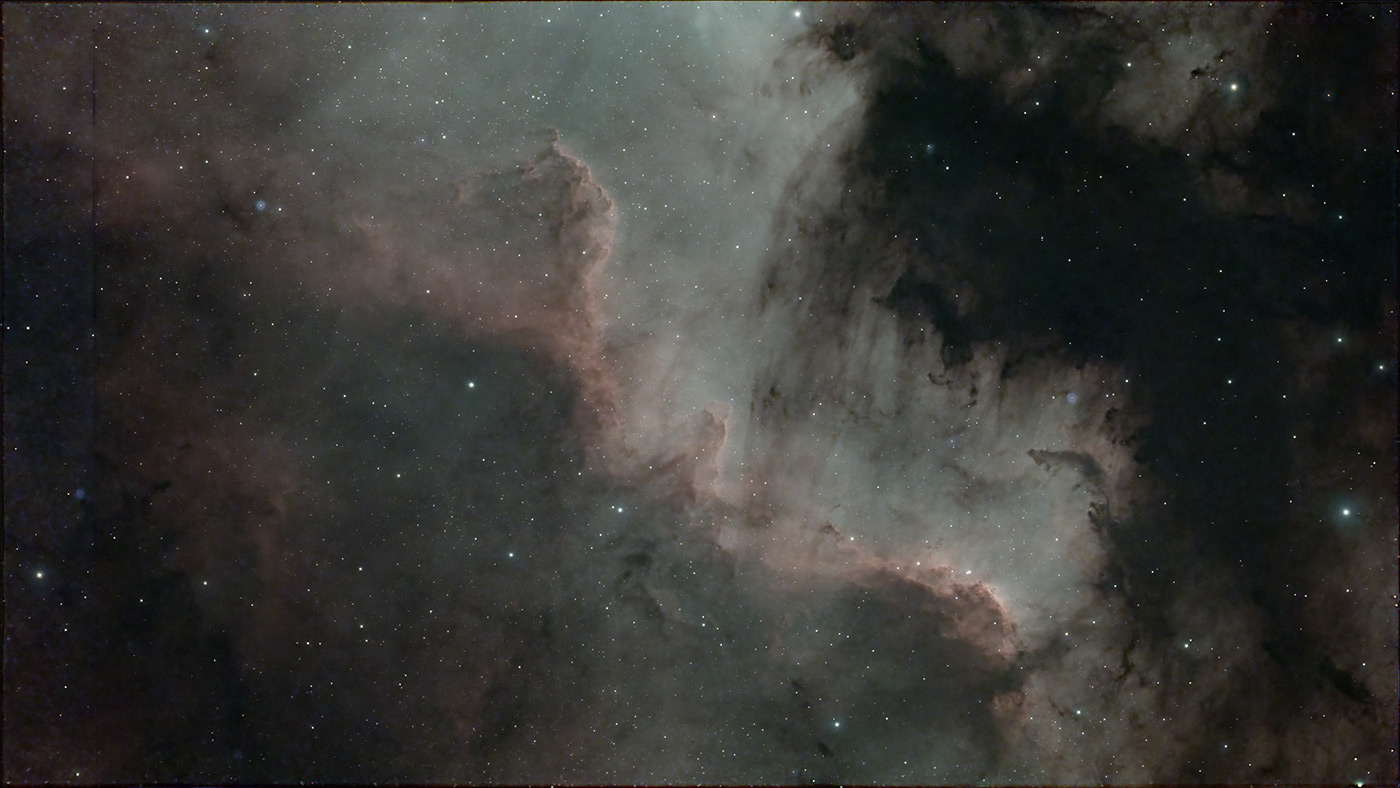
You are quite right in thinking you’ve seen this only last month. But this is a rework and re-colouring using PixInsight and the RC-Astro Suite. I’m sure you’ll agree just how much more detail and clarity has been brought out, the finest whiffs of dust, with pinpoint stars set in a backdrop of wonder.
EXIF
Camera: ZWO ASI585MC Pro.
Telescope: Altair Astro 70ED Telescope (420mm) + 0.8 reducer.
Mount: Sky-Watcher EQ5 Pro
Filter: Optolong L eNHance
Guide Camera: ZWO ASI120mm-s
Guide Scope: SVBony 30mm (f4)
Computer: ZWO ASIAIR pro
Method:
Lights: 23 x 120s Gain 252 (Unity).
Darks: 0
Flats: 0
Bias: 0
Stacked in Deep Sky Stacker, Processed in Pixinsight with RC-Astro Suite of tools.
The Tadpoles Nebula IC 410
This galactic intrigue lies in the constellation Auriga, roughly 12,000 light years from Earth. It’s a vast cloud of glowing gas and dust where new stars are being born. What makes it especially striking are two long, dark structures of material that stretch out like cosmic tadpoles. These shapes are dense pockets of gas and dust, slowly collapsing under gravity to form future stars.
In my quest for self-improvement, I reached out to a team member. The image I showed him is this:
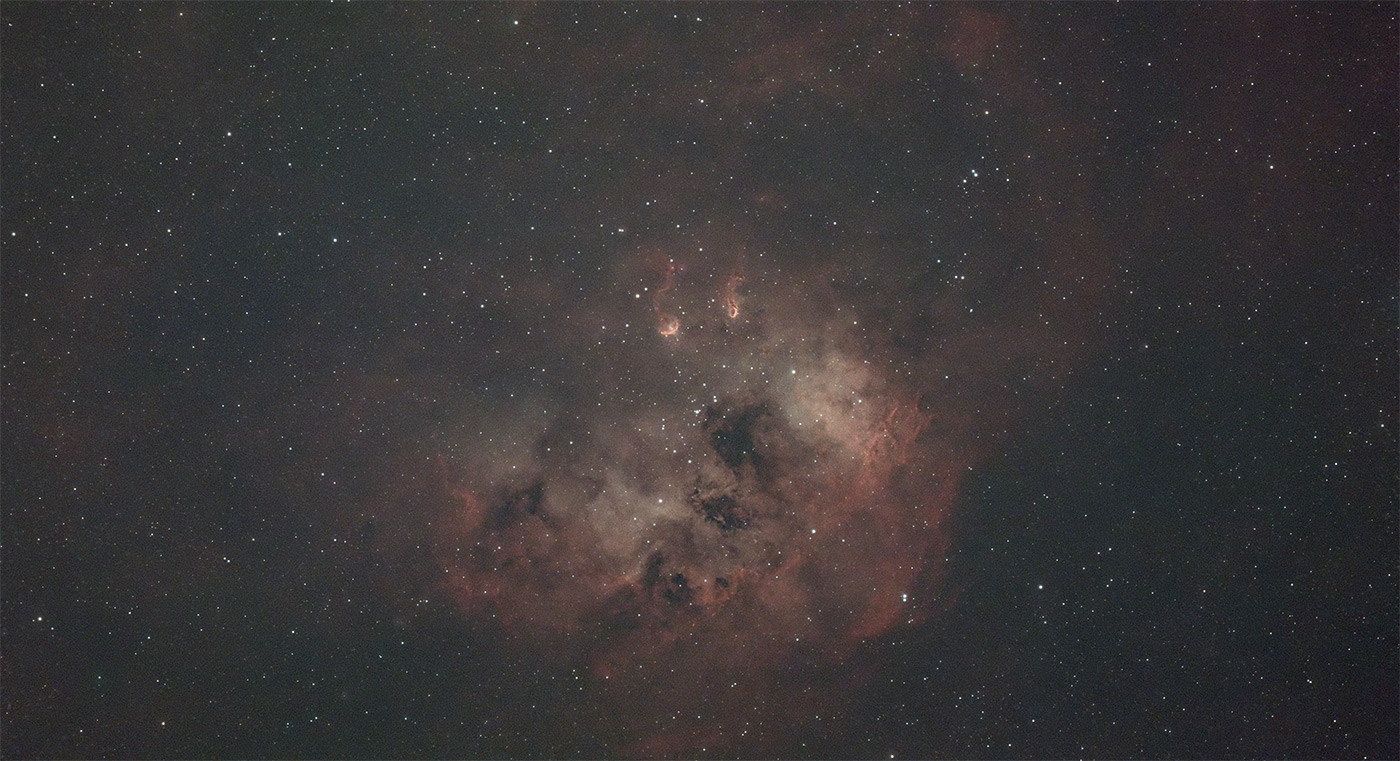
He said that by making the darker areas lighter, I was essentially making the image look flatter. Yet what I wanted was to give the viewer a sense of perspective, that it was a three-dimensional object they were looking at. I took this on board and read about how this might be achieved in astro.
I’m not at the stage yet of using a mono camera and filters to create an image. I’m just about getting to grips with my one-shot colour ASI585MC Pro, so I experimented in PixInsight and came up with this faux HSO palette:
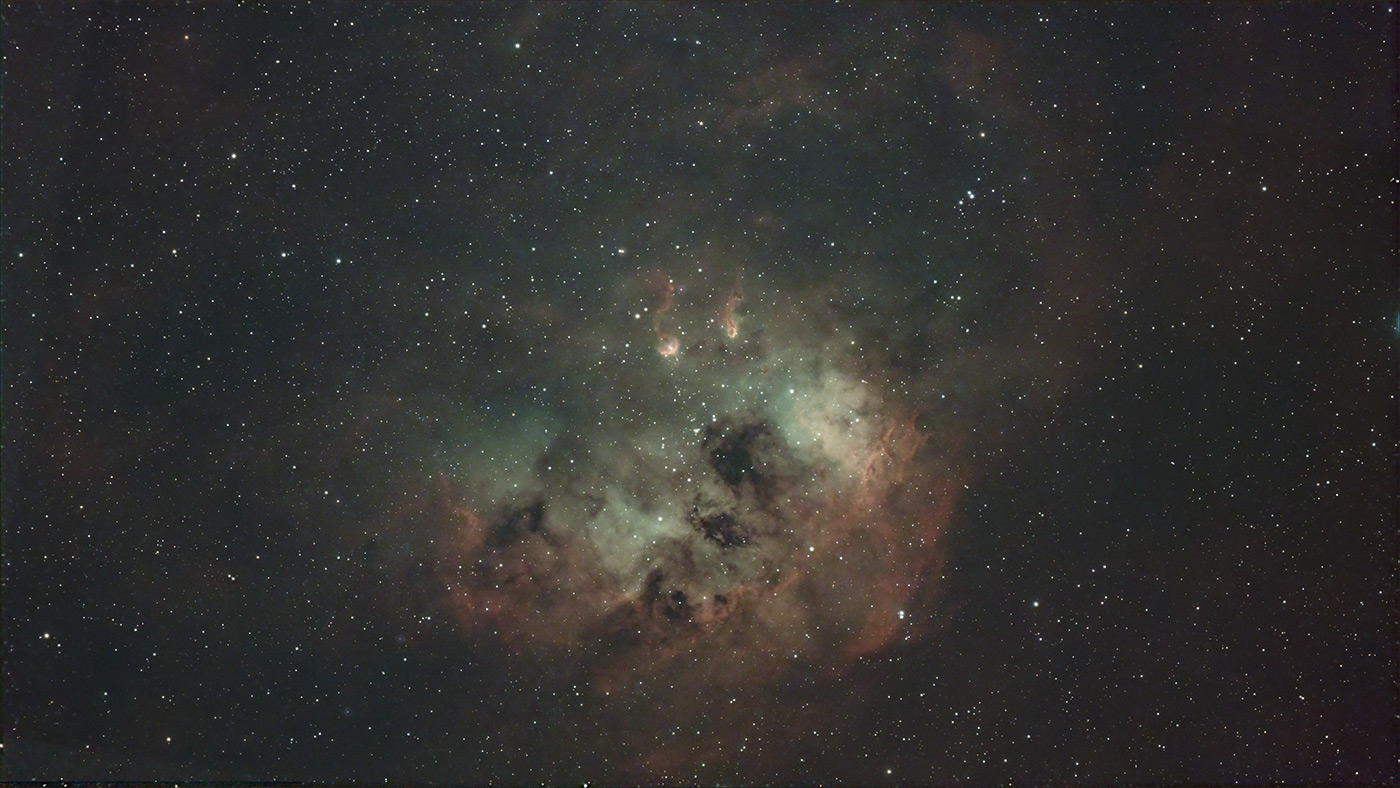
This has obviously, in my opinion at least, done what the team had suggested. Using masks and curves, along with some colour tweaking, I’ve made the image look much more 3D. I’ve also been experimenting with the UnSharpen Mask tool… maybe I’ve overkilled it?
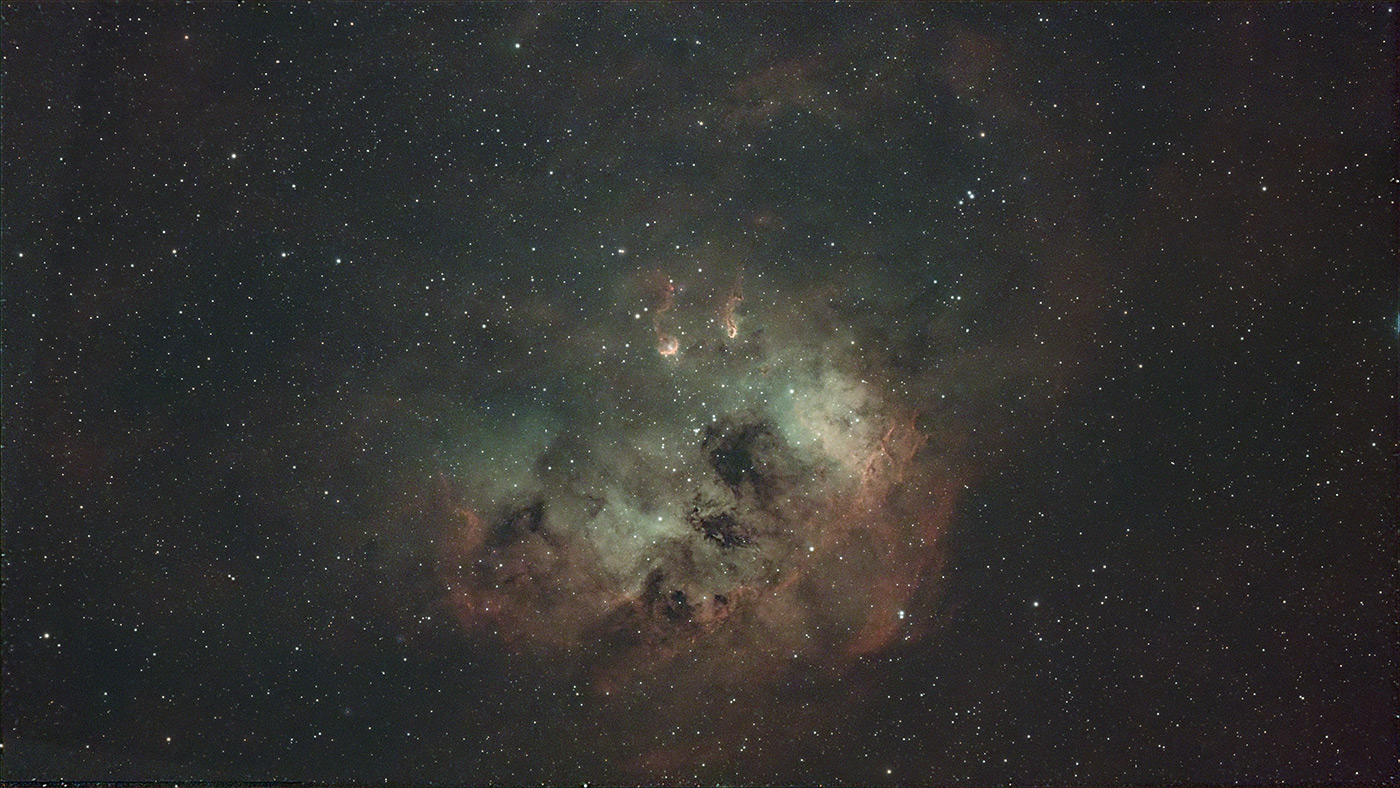
EXIF
Camera: ZWO ASI585MC Pro.
Telescope: Altair Astro 70ED Telescope (420mm).
Mount: Sky-Watcher EQ5 Pro StellarTuned.
Filter: Optolong L eNHance
Guide Camera: ZWO ASI120mm-s
Guide Scope: SVBony 30mm (f4)
Computer: ZWO ASIAIR pro
Method:
Lights: 67 x 120s Gain 252 (Unity).
Darks: 0
Flats: 0
Bias: 0
Stacked in Deep Sky Stacker, Pixinsight and RC-Astro Suite for processing.
Horsehead Nebula Barnard 33 (IC 434)
The other night, I had finished my run of Tadpoles images, and the sky was perfect. Very dark indeed, no Moon. I just couldn’t resist. Whilst it wasn’t very high in the sky, which as we all know means more noise, I thought to celebrate the return of Orion to our night skies, I would do a couple of hours on the Horsehead Nebula. This will end up being part of a large mosaic of the region, but to whet your appetite…
The Horsehead Nebula, also known as Barnard 33, is a dense patch of interstellar dust that blocks the light of the glowing hydrogen gas behind it. This creates the famous horse-shaped outline that makes it one of the most recognisable objects in the night sky. It sits just below Alnitak, the easternmost star in Orion’s Belt, and is part of the vast Orion Molecular Cloud Complex, a region rich in star formation.
What we see as darkness is actually thick dust and cold gas, so dense that it hides the stars forming inside. The nebula is illuminated from behind by the bright emission nebula IC 434, which glows red due to ionised hydrogen excited by nearby hot stars. The contrast between the glowing background and the dark foreground is what makes the Horsehead so visually dramatic.
Here is a bit of trivia for you: Betelgeuse, the large red supergiant in Orion, is about 600 light years from Earth. The Horsehead Nebula is about 1,400 light years away. That means we are closer to Betelgeuse than Betelgeuse is to the Horsehead Nebula, yet from our perspective they all appear grouped closely together in the sky.
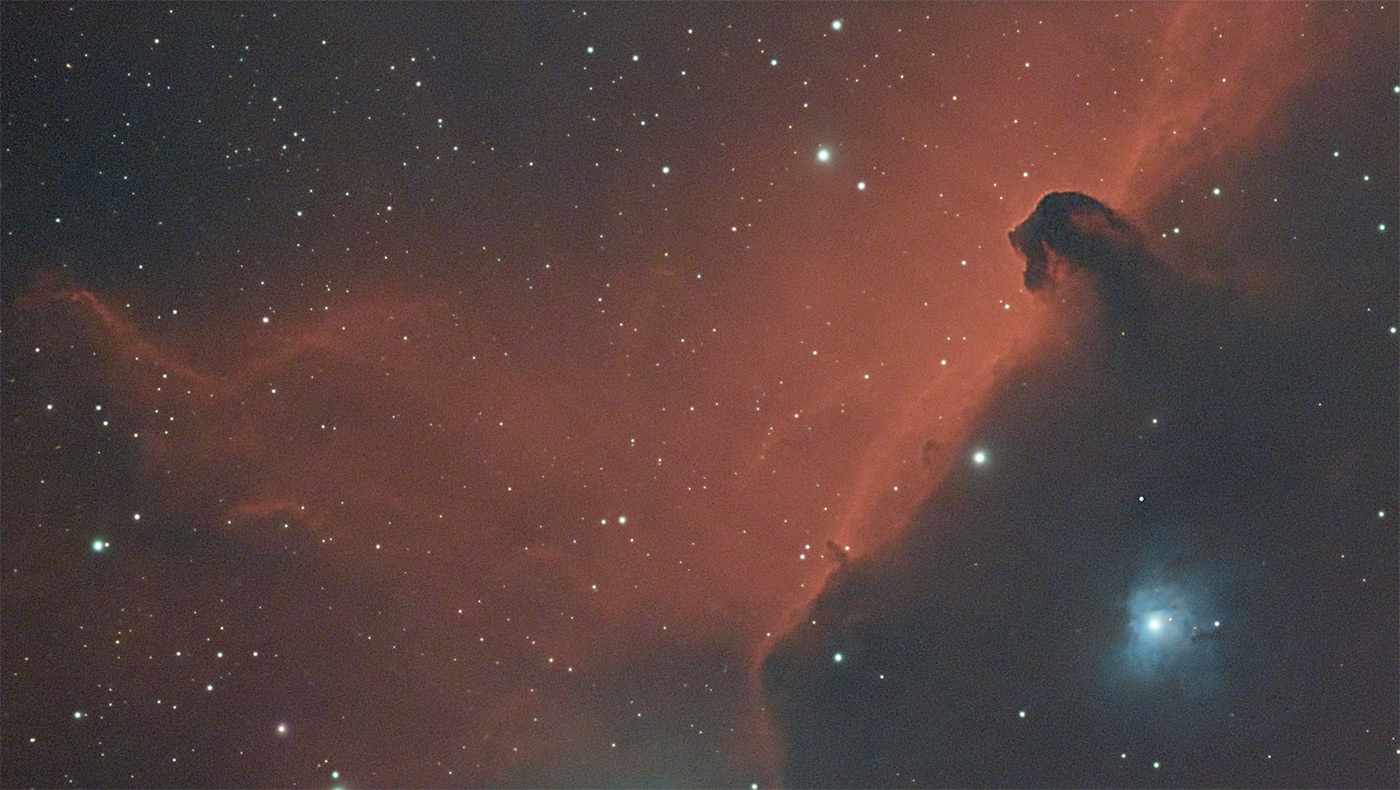
EXIF
Camera: ZWO ASI585MC Pro.
Telescope: Altair Astro 70ED Telescope (420mm).
Mount: Sky-Watcher EQ5 Pro StellarTuned.
Filter: Optolong L eNHance
Guide Camera: ZWO ASI120mm-s
Guide Scope: SVBony 30mm (f4)
Computer: ZWO ASIAIR pro
Method:
Lights: 57 x 120s Gain 252 (Unity).
Darks: 0
Flats: 0
Bias: 0
Stacked in Deep Sky Stacker, Pixinsight and RC-Astro Suite for processing.
Share this post:
By Jonathan Penberthy on 27/10/2025
Jonathan Penberthy
Cosmic Shutter Seeker and Star Programmer
Jonathan Penberthy is the Cosmic Shutter Seeker and Star Programmer at Park Cameras, with over 20 years of experience as a software engineer. His career journey has spanned industries, but a move to Park Cameras sparked a passion for astrophotography. Jonathan’s interest began while working on a lens selection app, leading him to explore the night sky with a Canon 7D. When he’s not programming or photographing the stars, he enjoys sailing and navigating by the cosmos. Learn more on his profile page.
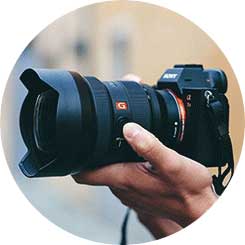
Trade in your old equipment
Fast and easy trade in service ensures your old gear is collected efficiently and you are paid quickly! It's very simple to trade in your unwanted photography gear. Just head over to our dedicated Sell or Part Exchange page, fill out the details, and we'll get back to you with an offer for your old gear. Take the cash, or put it towards the cost of your new gear. It's up to you! Find out more
sign up to the newsletter
Keep up to date on the latest photography news, events and offers. Sign up now